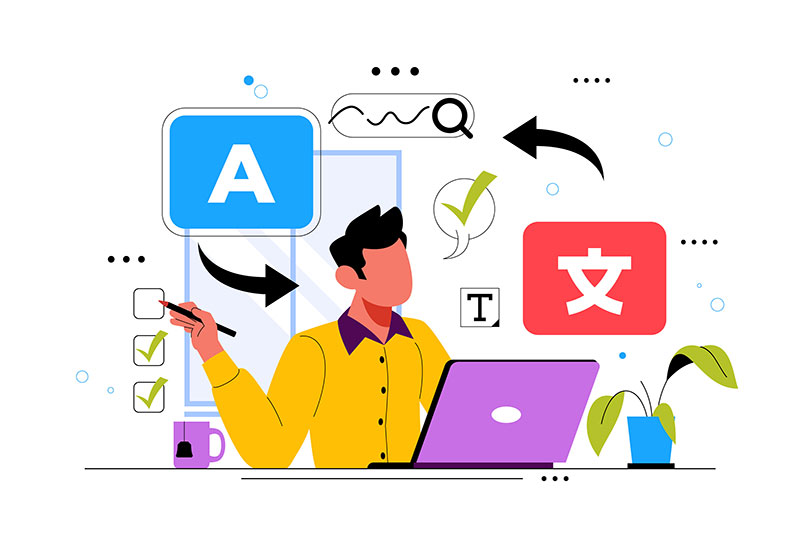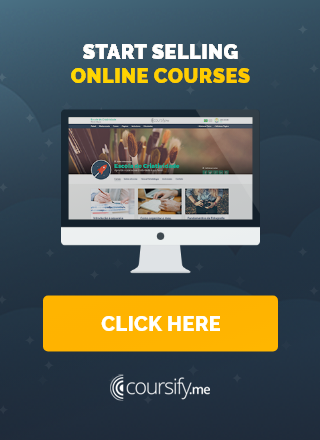Language Learning: Pro Tips to Teach Languages Online
There is no question that language learning can be a challenge. Fortunately, with the arrival of online courses, at least it has become more accessible, considering that in the past, there were only in-person courses available, which were often quite expensive.
Online learning has allowed more people to teach their language, with flexible schedules and without geographical barriers. But the facilities end there.
Even if you do have a perfect grasp of the concepts that underlie a given language, relaying those concepts to diverse learners adequately can be a major struggle.
This is particularly the case with online language learning. If you don’t have the in-person element as part of your teaching structure, it can be even more difficult to instill your knowledge into those you work with.
Fortunately, there are techniques and tools you can use that can help your cause tremendously. Let ‘s take a look!

Language Learning: Steps to become an exceptional online teacher
We are living in an age of advanced technology, and everyone – regardless of whether you are engaged in language learning, crochet, or fishing techniques – should be taking advantage of it.
That’s why the elearning market keeps growing and so many professionals are not only learning something new, but also teaching what they know best and making extra money.
If you wish to teach but are intimidated by the prospect of competing with other tutors (and machines!), relax.
As long as you put your nose to the grindstone and figure out what is called for to become a successful teacher, you should do great.
It doesn’t matter what language you teach; the process is the same regardless.
Let’s now take a step-by-step look at what you should do to create the best online language learning course and become the best instructor that you can be.
– How to become an online teacher
Figure out where your expertise lies
School teachers are often forced to choose an age group early in their pedagogical education.
They decide during their first years of certification whether they want to work in kindergartens, middle schools, or even go for PhDs and work in universities. And, of course, pedagogs need to determine the areas that they want to work in early.
There is no point in someone trying to enter an engineering program if they struggle with the basics of mathematics.
Language teaching should be similar. You should figure out early on what level you feel most comfortable working with. Consider the following questions:
- Do you like the idea of working with complete beginners, and helping them learn the basics? This can be a fun way to teach: pointing at your nose and other objects around the room. Teaching verbs by acting them out. Providing instruction in the very basics of pronunciation (if you have a strong ear for sounds, you might find yourself better than most at this).
- Are you someone who loves the underlying concepts of language, and wants to share them with others? Some people are real lovers of theory, and these can be some of the best candidates for teaching intermediate and advanced-level languages. If you are able to instill fundamental concepts behind grammar in your learners, you will truly be a master teacher.
- Do you like the idea of test preparation? Not everyone does, but if you are someone who is a stickler for rules and likes the idea of IELTS, TOEFL, or some similar type of test preparation, this might be a good direction for you to head in your teaching.
– 3 guidelines for creating online assessments
Figure out whether you prefer group or individual instruction
The next thing you will need to consider is whether you want to work with groups or individuals.
We all know from Covid that doing anything online in a group can be a particular challenge. However, as not everyone can afford private language learning classes, this is definitely something that there is a distinct need for. And some people are better at providing it than others.
On the other hand, you may be someone who prefers teaching individuals.
Obviously, there are a lot of advantages to this: you get to explain concepts further, feel out your students’ strengths and weaknesses, and make more progress per lesson than you would with a group.
So consider both ways and if in doubt, do a test! Start with a small group of three and see if this works well for both sides.
Don’t forget that all the students must have the same level of knowledge!
Develop your course content thoroughly
Even if you want to allow for some flexibility with individual learners, you will need to develop curricula before you get started. There are distinct phases involved in this:
Developing a curriculum
You should create structured, step-by-step curricula for whatever level(s) you plan to teach.
We highly recommend you divide your online course into modules, and test it out before you start marketing it publicly.
The important thing is to follow a logical order, making it easy for the student to understand what he is doing and how he is doing.
You can also begin with a proficiency test to know exactly in what level of expertise the student is, so that you can give lessons that won’t be boring for him/her.
– To do list to create online courses
Be sure to include a variety of content
These days, content is king. Gone are the days when teachers simply repeated verb conjugations endlessly on a blackboard.
Content can include audio and video clips, presentations, quizzes, and anything else that you think will keep your students engaged and on track to master language learning.
- Incorporate interactive tools. Language learning is among the most active intellectual pursuits there are. Experts recommend that language classes should involve an 80/20% student to teacher talking percentage. Therefore, it is your job to create the right stage for your students to talk. Use group activities if you have a group, have students respond to audio clips, have them create and read stories, etc.
- Use as much contemporary material as possible. You want to be both up-to-date and varied as you can in what you present to your students. There is nothing more off-putting to students than old-school language textbooks in which the language presented obviously doesn’t match the real world. Use music, movie clips, billboards, and other things that you think will speak to your students’ interests.
– How to Create Engaging Multimedia Content for Online Courses
Consider additional useful tools
While beefing up your personal credentials is certainly important, you shouldn’t be afraid to use some technical tools as well. For example, if you’re an English teacher, English AI can be of tremendous assistance to you and your students.
It can help students with every aspect of language learning: building their vocabulary, improving writing, reading, and compression skills, and gaining valuable feedback in the process.
You should always keep your eyes open for innovative new tools that might be on the market. In addition to things like English AI, this can include:
- Digital flash cards. Just like their paper equivalent, digital flash cards can be useful in helping students memorize new vocabulary.
- Readlang. This tool provides learners with extra practice in reading specifically, and helps to build vocabulary in the context of interesting stories and dialogs.
- Giglish. Giglish is another platform that allows for AI-assisted conversational practice in English. Students can use it to gain confidence in their speaking ability.
– Tips for using technology in education
Choose a platform
The next thing that you will need to do is choose a platform. There are several different components involved in this:
- Choosing an online marketplace to find students. There are some great ways to publicize your work and find students these days. Platforms such as iTalki, Verbling, and Preply are among the better-known ones.
- Choosing a course platform. Teachers can either choose to use pre-recorded courses, or use interactive ones. Some use a combination of these things. Platforms such as Coursify.me allow you to build course content and market it.
- Creating a sales page. You should also have a personal webpage where people can go to see what you are all about and what you have to offer. Again, you can create one inside the platform you choose to host your course. Coursify.me allows you to create your own page with your visual identity and even your own domain. You can also use your it for scheduling, payments, and other practical aspects of teaching.
Be sure to market yourself!
Even people who want to rely on word of mouth to gain students, you need a professional platform. And it doesn’t hurt to put yourself out there and let your name be known among the general public.
Using common platforms like LinkedIn are a good start, but you should also think about other tools that can help you to show what you know and attract an audience, like YouTube and TikTok.
When you create your professional profile, be sure to highlight your qualifications, experience, and personal teaching style so that potential students can see what you’re all about.
Also, consider using multiple channels – remember, many people look at social media more than anything else online.
Another idea is to offer free trial lessons or a free minicourse. This gives potential students a risk-free way to see if they like your teaching style, and also gives you an excellent chance to hook them with your charm and exceptional teaching abilities.
– How to create an online mini course
Make your language learning program your own right now

While the steps outlined here are ones you should pay careful attention to, ultimately you should make your online teaching persona your own thing.
This is what will speak to potential students the most: someone who cares about the teaching profession and clearly puts love and personal expression into what they do.
If you have a real passion for teaching, your students will appreciate it and benefit from it.
With Coursify.me, the teacher has a ready and easy to use platform, where he can upload the content in an intuitive and quick way.
Complete LMS, Coursify.me features integration with platforms like YouTube and Vimeo, which is ideal for teachers who want to provide video lessons.
– What is a Learning Management System
In addition, the user can upload texts, images, audios and any other material that is hosted on Dropbox or on the computer itself.
There is no limit on the number of students, and the teacher has full control over who has access to the classes, being able to monitor each student to find out who registered, attended the classes and fulfilled the activities sent.
To learn more, visit our website, test the platform and teach your students in the best possible way.

